Missions
There were, in total, eight Aeolus missions over the course of nearly twenty years. Each landed on and studied a specific moon (occasionally, multiple moons) for the duration of the surface phase(s): Callisto (Aeolus I), Ganymede (Aeolus II), Europa (Aeolus III), Io (Aeolus IV), Titan (Aeolus V), Iapetus and Rhea (Aeolus VI), Dione and Tethys (Aeolus VII), Enceladus and Mimas (Aeolus VIII). Other targets of study included the gas giants themselves, a small number of their minor moons, and the rings of Saturn.
Aeolus I
The mission was launched on December 20, 2049 and returned to Earth on March 21, 2051 (total time 456 days). The crew consisted of Garrison Fischer (NASA), Huang Xinyi (CNSA), Belaye Njeru (PAUSA), Sima Aliyeva (ROSCOSMOS), Versha Kusari (ISRO), and Yolanda Palermo (AECS). Jupiter orbit insertion occurred on February 18, 2050, and observations of Jupiter and the Jovian system were made over the course of the next three days.
Callisto orbit insertion occurred on February 21, 2050, and surface equipment was deployed over the following 20 hours. Touchdown of lander
Odin occurred at Valhalla Crater on February 22, 2050, and surface operations were conducted until the crew's departure on January 18, 2051 (334 days). Base camp was named "Odin's Landing," in reference to the Norse god who ruled over Valhalla (also the namesake of the lander).
Research conducted while on the surface of Callisto included studies of its geological composition, structure, and history; detailed analysis of the Jovian magnetic field and radiation belts; and intensive field testing of equipment to ensure its functionality. The crew discovered that Callisto is, in fact, geologically stratified, though it does not have an internal ocean like its fellow moons Europa and Ganymede. Aeolus I also served as a minimal-risk "dry run" of the critical power-beaming and surface base magnetic shielding systems, allowing for troubleshooting without the danger of extreme irradiation. After departure from Callisto, the crew took two days to rendezvous with and briefly land on the eccentric outer moon Himalia, conducting additional research on the nature of Jupiter's outer moons. The
Janus achieved its outbound vector on January 20, 2051, and returned safely to lunar orbit two months later.
Aeolus II
The mission was launched on February 20, 2052 and returned to Earth on May 20, 2053 (total time 455 days). The crew consisted of Xia Jin (CNSA), Ceylan Mehmet (NASA), Kishimoto Tetsuzen (JAXA), Nóirín Kilmartin (ESA), Teremun Halabi (PAUSA), Zyryanova Svetlana Sergeyevna (ROSCOSMOS), Nawaar al-Rahaim (UAESA), and Cícero Cavalcanti (AECS). Jupiter orbit insertion occurred on April 20, 2052, and observations of Jupiter and the Jovian system were made over the course of the next four days.
Ganymede orbit insertion occurred on April 24, 2052, and surface equipment was deployed over the following 20 hours. Touchdown of lander
Baihe occurred at Serapis Crater on April 25, 2052, and surface operations were conducted until the crew's departure on March 20, 2053 (330 days). Base camp was named "Taibai Sanctum," in reference to the classical Chinese sage of wine and poetry.
Research conducted while on the surface of Ganymede included studies of its geological composition, structure, and history; its unique magnetic field; and further field testing of equipment. The crew confirmed that Ganymede, like Europa, does have a subsurface ocean of liquid water, kept warm by tidal forces and residual core heat. Tests with radio interferometry confirmed the presence of a tenuous ionosphere only a few dozen kilometers above the surface, just below the point where Ganymede's magnetosphere interacts with the Jovian field. After departing Ganymede on March 20, the
Janus achieved its outbound vector on March 21, 2053, and returned safely to lunar orbit two months later.
Aeolus III
The mission was launched on April 22, 2054 and returned to Earth on July 24, 2055 (total time 458 days). The crew consisted of Taylor Stewart (NASA), Einvarður Gunnarsson (ESA), Saada Mahiri (PAUSA), Kharzin Anton Artemovich (ROSCOSMOS), Fan Liang (CNSA), Amira Ruiz (AECS), Sukhmanpreet Chawla (ISRO), and Hamada Urumi (JAXA). Jupiter orbit insertion occurred on June 21, 2054, and observations of Jupiter and the Jovian system were made over the course of the next four days.
Europa orbit insertion occurred on June 25, 2054, and surface equipment was deployed over the following 20 hours. Touchdown of lander
Nautilus occurred at Conamara Chaos on June 26, 2054, and surface operations were conducted until the crew's departure on May 24, 2055 (332 days). Base camp was named "Nemo Station," in reference to Jules Verne's classic novel
20000 Leagues Under the Sea.
Research conducted while on the surface of Europa included studies of its geological composition, structure, and history. More prominent, however, was the extensive research on Europa's subsurface biosphere, accessed through the borehole created by the probe
Ariadne on its descent to the subsurface nearly twenty years earlier. The expedition had brought with them several smaller probes with dozens and dozens of kilometers' worth of umbilical cables. These were fed down the borehole through an airlock (created by
Ariadne's THESEUS shell) and into the ocean. Periodically, biological samples were retrieved along with the ROV probes and examined very carefully in the on-site sterile lab. These studies revealed something startling: the organisms within Europa were distantly related to several extant —and some extinct— clades of Earth life, such as
rotifers and
tardigrades.
After departure from Europa on May 24, the
Janus achieved its outbound vector on May 25, 2055, and returned safely to lunar orbit two months later. Though the labs at Nemo Station had examined many examples of Europan life, relatively few biological samples were brought back to Earth itself for study. This was partially because of the difficulty of safely preserving and storing such samples for the journey home, but mostly due to biosecurity concerns.
Jupiter and Io visible in alignment from the surface of Europa, Jul. 30, 2054; taken by astronaut Saada Mahiri (PAUSA). Taken with specialized Nikon R2950 camera during surface operations at Nemo Station, at Conamara Chaos.
Aeolus IV
The mission was launched on June 29, 2056 and returned to Earth on October 4, 2057 (total time 462 days). The crew consisted of Korovina Marina Valerianovna (ROSCOSMOS), Raziya Mwinyi (PAUSA), Sofia Navarro-Bright (NASA), Xiong Zhen (CNSA), Stavros Metrides (ESA), Mae Yun-Soo (KSA), Javier de la Cruz (AECS), and Takesh Aathiran (ISRO). Jupiter orbit insertion occurred on August 28, 2056, and observations of Jupiter and the Jovian system were made over the course of the next four days.
Io orbit insertion occurred on September 1, 2056, and surface equipment was deployed over the following 20 hours. Touchdown of lander
Isis occurred at Danube Planum on September 2, 2056, and surface operations were conducted until the crew's departure on August 4, 2057 (336 days). Base camp was named "
Vrata Ada," as a colorful allusion to the intense volcanic activity in the area.
Research conducted while on the surface of Io included studies of its geological composition, structure, and history; in particular its volcanic activity. Mission commander Marina Korovina, Sofia Navarro-Bright, and Xiong Zhen became the first humans to summit Pele Mons: the largest volcano on Io and one of the most active volcanoes in the entire solar system. Studies conducted on its unusually sulfur-rich lava flows and the channels they flowed through indicated the presence of ample ice on Io eons ago; subsequently sublimated due to intense tidal heat.
The mission had a close brush with disaster on May 27, 2057. Due to a technical issue aboard the
Janus, power to the surface magshield was unexpectedly interrupted for a period of 71 minutes. Takesh Aathiran and Sofia Navarro-Bright were performing an on-site EVA at the time, and reached the radiation-hardened habitat airlock mere moments before the auxiliary magshield power was expended. Had they been just twelve seconds late, both astronauts would have absorbed the full force of Jupiter's radiation belts: enough radiation in five seconds to guarantee death within days. Fortunately, no other catastrophic issues occurred during the remainder of the mission. After departing Io on August 4, the
Janus achieved its outbound vector on August 5, 2057, and returned safely to lunar orbit two months later.
Aeolus V
The mission was launched on September 25, 2059 and returned to Earth on February 1, 2061 (total time 495 days). The crew consisted of Sechen Ayateva (ROSCOSMOS), Su Zhelan (CNSA), Xolani Matsoba (PAUSA), Jairo Molina (AECS), Hellen Fowler (NASA), Airi Miettinen (ESA), Vikas Padagavakar (ISRO), and Taiseer al-Majid (UAESA). Saturn orbit insertion occurred on January 19, 2060, and observations of Saturn and the Saturnian system were made over the course of the next two days.
Titan orbit insertion occurred on January 21, 2060, and surface equipment was deployed over the following 36 hours. Touchdown of lander
Beluga occurred on the shores of Kraken Mare on January 23, 2060, and surface operations were conducted until the crew's departure on October 7, 2060 (258 days). Base camp was named "Port Melville," in reference to classic author Herman Melville and his magnum opus,
Moby Dick.
Research conducted while on the surface of Titan included studies of its geological composition, structure, and history; its unique atmosphere; and its strange hydrological cycle. The hydrocarbon sea proved particularly interesting, tantalizing researchers with evidence of much more complex chemistry than expected. In certain conditions, complex hydrocarbons formed through photochemistry in the upper atmosphere would precipitate out of the methane/ethane pools and begin to form complex shapes. This odd behavior occurred very slowly due to the cryogenic temperatures of Titan, but provided a fascinating look into low-temperature, highly polar proto-biochemistry.
The atmosphere of Titan also provided a unique experience for the astronauts. Due to the combination of low gravity and high density, the crew of Aeolus V became the first human beings to take flight under their own power using specialized artificial wings. Members of the expedition later described the experience as "exhilarating," and expressed the desire to return to the frozen moon in the future. After departing Titan on October 7, the
Janus achieved its outbound vector on October 8, 2060, and returned safely to lunar orbit four months later.
Saturn and a few of its moons visible through the haze of Titan's upper atmosphere, Jan. 21 2060; taken by taikonaut Su Zhelan (CNSA). Taken from TAV
Beluga during final descent toward Mare Kraken, 45 kilometers above Menrva Crater.
Aeolus VI
The mission was launched on October 22, 2061 and returned to Earth on March 1, 2063 (total time 495 days). The crew consisted of
add names later. Saturn orbit insertion occurred on February 15, 2062, and observations of Saturn and the Saturnian system were made over the course of the next four days, including a brief landing on the minor moon Phoebe on February 16, 2062. Iapetus orbit insertion occurred on February 18, 2062, and surface equipment was deployed over the following 20 hours. Touchdown of lander
Discovery occurred at Engelier Crater on February 19, 2062, and surface operations were conducted until the crew's departure on June 26, 2062 (126 days). Base camp was named "Camp Clarke," in reference to Arthur C. Clarke's classic novel
2001: A Space Odyssey which prominently featured Iapetus.
Research conducted while on the surface of Iapetus primarily consisted of studying its geological composition, structure, and history. Analysis of ice cores from various points on the surface provided strong evidence for the theory that Iapetus formed alongside the rest of the original Saturnian subsystem, placing its age at about 4.5 billion years. However, the origin of the equatorial mountains remained elusive. In addition, comparison of samples from its two very differently-colored hemispheres and the surface of Phoebe confirmed that the darker hemisphere is covered in debris from Phoebe's dust ring.
Only about half of the surface time in the Saturn subsystem was spent on Iapetus. On June 26, the surface crew returned to the
Janus to journey to their next target: Rhea. On the way, the crew made a brief landing at Hyperion on June 28, 2062 and conducted science for approximately a day. Orbit insertion over Rhea occurred on June 30, 2062, and surface equipment was deployed over the following 20 hours. Touchdown of lander
Discovery occurred at Powehiwehi Crater on July 1, 2062, and surface operations were conducted until the crew's departure on November 4, 2062 (126 days). Base camp was named "Camp Le Guin," in reference to classic science fiction author Ursula K. Le Guin.
Research conducted while on the surface of Rhea primarily consisted of studying its geological composition, structure, and history. Fascinatingly, sonar scanning of Rhea's interior indicates that it is
not geologically differentiated; its composition is closer to a homogenous mixture of ice and silicate rock. Additionally, the oldest impact craters visited were estimated at around 400 million years old. All of these facts together seem to suggest Rhea itself —and most or all of the moons interior to it— may have only formed around 400 million years ago, possibly indicating a common origin with Saturn's famous ring system as well. Left with this mystery, the crew departed Rhea on November 4. The
Janus achieved its outbound vector on November 5, 2062, and returned safely to lunar orbit four months later.
Aeolus VII
The mission was launched on November 19, 2063 and returned to Earth on March 28, 2065 (total time 495 days). The crew consisted of
add names later. Saturn orbit insertion occurred on March 14, 2064, and observations of Saturn and the Saturnian system were made over the course of the next two days. Dione orbit insertion occurred on March 16, 2064, and surface equipment was deployed over the following 20 hours. Touchdown of lander
Sarasvati occurred at Amata Crater on March 17, 2064, and surface operations were conducted until the crew's departure on July 22, 2064 (128 days). Base camp was named "Camp Virgil," in reference to the author of the ancient epic for which the features of Dione are named.
Research conducted while on the surface of Dione primarily consisted of studying its geological composition, structure, and history. Sonar mapping of the subsurface revealed the presence of a thin layer of liquid water several dozen kilometers down, abutting a very large silicate core. Although this ocean remained inaccessible for the duration of the expedition, ice samples from deep within Dione's chasms indicated some turnover between the saltwater mantle and the crust. Analysis of crater age was consistent with that of the Aeolus VI crew on Rhea: Dione formed approximately 400 million years ago. However, only two craters were dated to that age; most were much more recent, further supporting the hypothesis of glacial turnover.
Only about half of the time in the Saturn subsystem was spent on Dione. On July 22, the surface crew returned to the
Janus to journey to their next target: Tethys. Orbit insertion over Tethys occurred on July 24, 2064, and surface equipment was deployed over the following 20 hours. Touchdown of lander
Sarasvati occurred at Aietes Crater on July 25, 2064, and surface operations were conducted until the crew's departure on November 30, 2064 (128 days). Base camp was named "Camp Homer," in reference to the author of the ancient epic for which the features of Tethys are named.
Research conducted while on the surface of Tethys primarily consisted of studying its geological composition, structure, and history; as well as its interaction with the weak Saturnian magnetosphere. Tethys proved a close match for Rhea: its interior was revealed to be a mostly-homogenous ice-rock mix rather than stratified with a core. However, Tethys has a much higher ratio of water ice; why this is the case remains unknown. Studies of the equatorial leading hemisphere also found large amounts of high-energy electrons ionizing the water and ammonia, cooling the surface of that region slightly. After the crew departed on November 30, the
Janus achieved its outbound vector on December 2, 2064, and returned safely to lunar orbit four months later.
Aeolus VIII
The mission was launched on December 16, 2065 and returned to Earth on April 25, 2067 (total time 495 days). The crew consisted of
add names later. Saturn orbit insertion occurred on April 11, 2066, and observations of Saturn and the Saturnian system were made over the course of the next three days. Enceladus orbit insertion occurred on April 14, 2066, and surface equipment was deployed over the following 27 hours. Descent was nearly aborted due to guidance system failure after passing through a geyser plume, but the lander
Altair safely touched down just northwest of the fork at Damascus Sulci on April 16, 2066. Surface operations were conducted until the crew's departure on October 1, 2066 (168 days). Base camp was named "Roc's Nest," in reference to the legendary giant eagle in Arabic folklore.
Research conducted while on the surface of Enceladus included studies of its geological composition, structure, and history; particularly its subsurface sea. The landing site at Damascus Sulcis was chosen specifically for the frequency of geysers, which were studied extensively for much of the surface phase. Analysis of the plumes showed a subsurface liquid water environment rich in molecular nitrogen, ammonia, complex hydrocarbons, mineral salts, and a surprising amount of phosphates. To the disappointment of many, however, no trace of actual life was found. The facts that Enceladus and Dione are in strong orbital resonance and also both geologically stratified seem to indicate that their tidal interaction helped speed along the differentiation process after their formation 400 million years ago.
On October 1, the surface crew returned to the
Janus to journey to their next target: Mimas. Orbit insertion over Mimas occurred on October 2, 2066, and surface equipment was deployed over the following 20 hours. Touchdown of lander
Altair occurred at Herschel Crater on October 3, 2066, and surface operations were conducted until the crew's departure on December 24, 2066 (82 days). Base camp was named "Merlin's Tower," after a character from Arthurian legend (for which most of the moon's surface features are named).
Research conducted while on the surface of Mimas primarily consisted of studying its geological composition, structure, and history; as well as its interaction with Saturn's magnetosphere. Careful analysis of Herschel Crater confirmed its age at just under 400 million years old, adding yet more evidence to the theory that the moons interior to Titan formed from pieces of a much larger moon —or moons—that was somehow destroyed. More time was spent on Enceladus than Mimas due to the increased scientific interest in the former, but Mimas proved an equally interesting object of study due to its geologically violent past. After departing from Mimas on December 24, the expedition ventured to the outer edge of the ring system for close observation and sample collection. After six days at the rings, the
Janus achieved its outbound vector on December 30, 2066, and returned safely to lunar orbit four months later.
Mission Structure
Due to the multi-target nature of the Aeolus program, each of the eight missions had a profile tailored to their specific targets. Notably, Aeolus V required a transatmospheric vehicle (TAV) for landing and departing Titan; and three of the four Cronian phase missions had two primary landing targets. However, all of the missions shared a similar basic structure.
- The crew are launched from Earth to the Earth Orbital Spaceport. From here the crew transfers to the Orion III crew shuttle and are ferried to the UNIS Janus in lunar orbit.
- After final checks, Janus ignites its Valkyrie drive at half power to escape lunar orbit. Shortly after, it throttles up to full power.
- After about two days of constant acceleration, the engine shuts off and the cruise stage begins. This stage lasts about two months for the Jovian phase missions, and four for the Cronian phase missions. When the Janus reaches the gravitational sphere of its target gas giant, the engine is ignited for another two days of deceleration to orbital velocity.
- Arriving in orbit of the target planet, the crew spend up to four days making preparations and conducting observations of the natural satellite system around them as they rendezvous with their target moon.
- The Janus attains low orbit over its target moon, and the crew spend twenty to thirty-six hours carefully guiding the surface habitat and supply modules through safe descent to the landing site.
- Once preparation of the site is complete, all but two of the crew board the landing vehicle and descend to the surface. Meanwhile, the Janus reaches a companion orbit and begins to beam power from its fusion reactor down to the magshield on the surface.
- The crew set up their habitat and equipment, and spend between about 330 days to about 260 days on the surface conducting science. Members of the crew are periodically transferred between Janus and the surface.
- The crew pack up their belongings and samples, store their equipment, and depart the surface, docking with the Janus for the final time.
- The Janus ignites its engine again for another two days to leave the planet and its moons, bound for Earth and Luna. Much like the outbound trip, Earthbound cruise lasts between two to four months.
- After another two days of deceleration, the Janus enters lunar orbit and rendezvous with the UNAC drydock to be refitted and resupplied for the next mission, while the crew are sent home to Earth in the Orion III crew shuttle.
UNIS Janus
The United Nations Interplanetary Spacecraft
Janus was the direct successor of the Ares program's UNMS
Athena, built for the Aeolus program. It was constructed in orbit of
Luna using parts of the decommissioned Mars ferry as well as new components specifically designed for its own mission: taking humans to the gas giants and back. Over twice as long as its predecessor at 0.4 kilometers, the
Janus' main drive was a powerful linear fusion engine developed jointly by JPL and ESA. It also carried an extremely strong nuclear-powered magnetic field generator, to ward the vessel and its inhabitants against both solar wind and the intense radiation belts of Jupiter itself.
Janus served its crews faithfully across all eight missions of the Aeolus program, taking four crews to Jupiter and four crews to Saturn. Upon
Janus' return to lunar orbit after Aeolus VIII in 2067, it was formally decommissioned and its parts held in orbital drydock to be repurposed.
SPACECRAFT STATISTICS
Length
400 m
Total launch mass
22580 tons
Total dry mass
4520 tons
Interplanetary drive
Valkyrie I zeta-pinch pulsed fusion engine
Exhaust velocity
239920 m/s
Max acceleration
0.88 m/s2 (0.09 G)
Δv
385924 m/s
Specific impulse
24482 s
Power plant
fusion thermal
Fusion plant output
4.2 GWe
LEO shuttle
Orion III crew module
Lander
Polaris single-stage reusable small-body lander
Crew
6 - 8
Avg. crew duration
1.2 years
Constructed
2040 - 2048
Launched
2049 (Aeolus I)
Decommissioned
2067
Legacy
The magnitude of the technological, scientific, and cultural impact Aeolus had on human civilization is hard to overstate. The Aeolus program as a whole was the most ambitious, extensive, and economically intense space exploration effort in human history, at least until the
Arete mission to
Proxima Centauri over a century later. It set an incredible precedent: for nearly two decades, a new solar system body was studied in-person approximately every
two years. Over the course of the Aeolus missions, humankind learned everything they needed to know to safely explore the outer solar system, and in time began to
permanently inhabit the moons of the gas giants because of the discoveries made by the Aeolus crews. The Aeolus era was defined by a pervasive fascination with spaceflight that captivated the people of Earth, setting them firmly on their path to the stars.
Perhaps the most noteworthy of all eight missions was Aeolus III: the human species' first endeavor in studying an
"alien" ecosphere. Procedures established by the Aeolus III crew and their mission planners to protect the native life of an alien world formed a completely new approach to space exploration. The Europa Protocols, though modified over the centuries to reflect an ever-growing understanding of
life in the cosmos, still remain as the bedrock of UNAC and
ERPA xenobiological research methods.
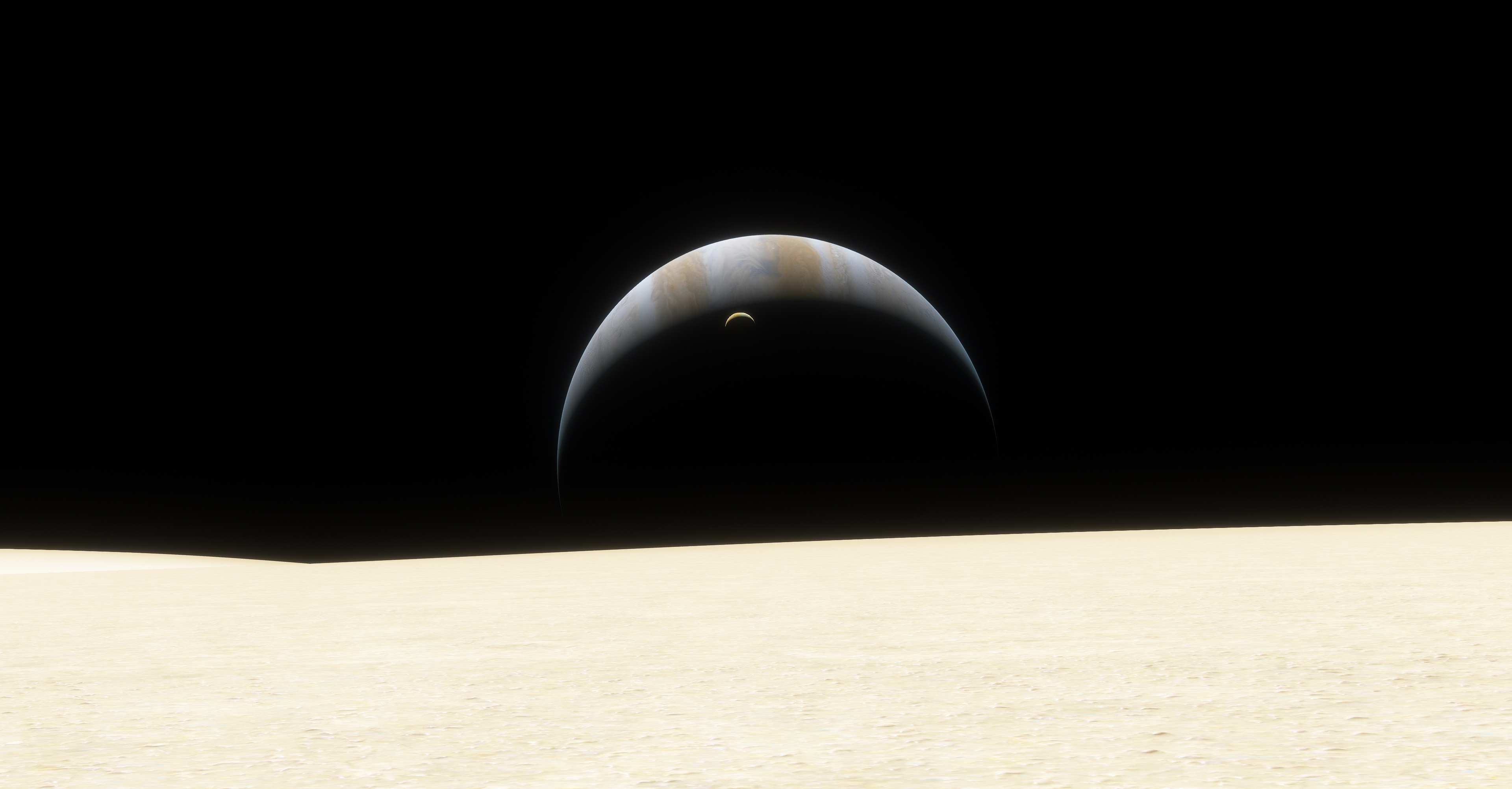
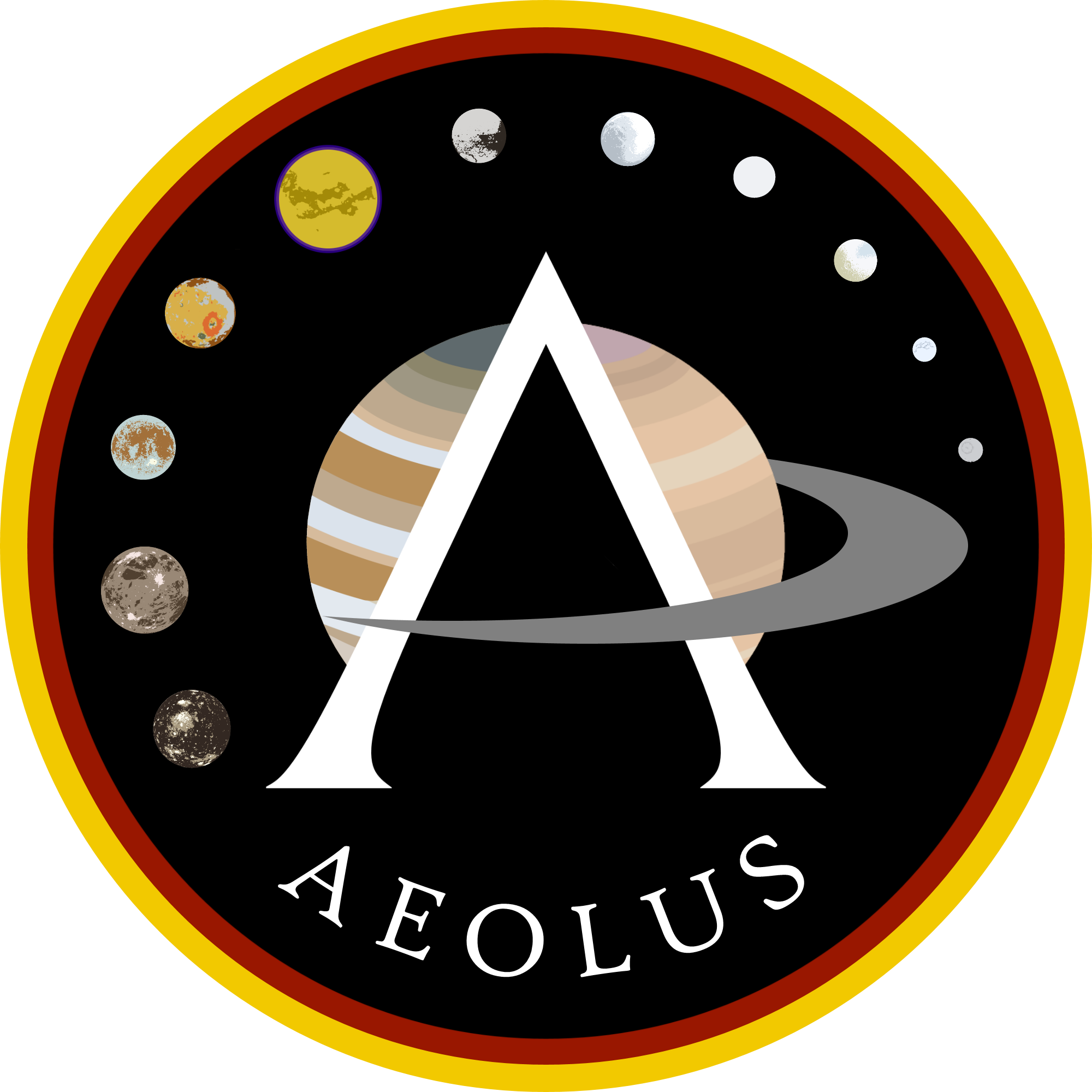
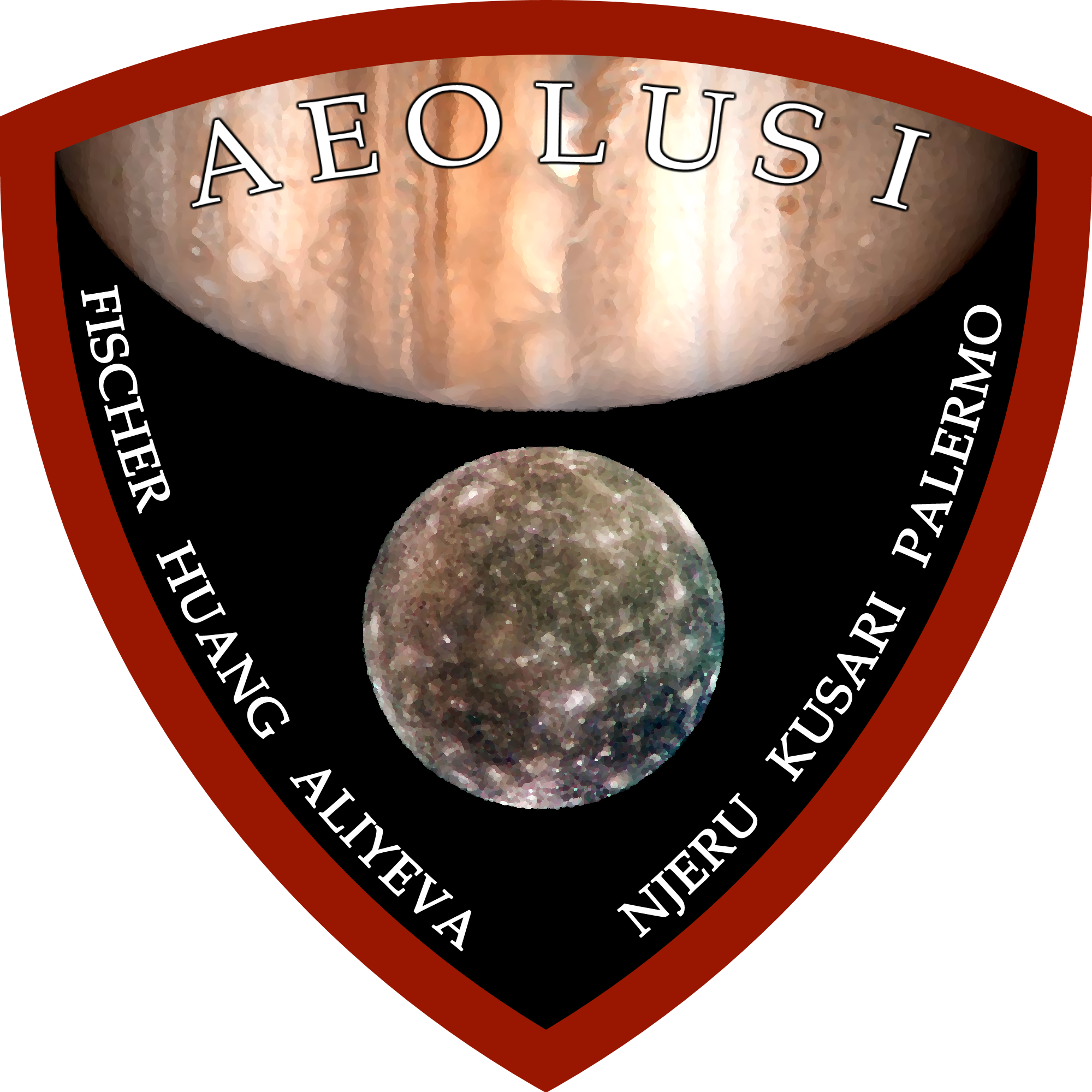
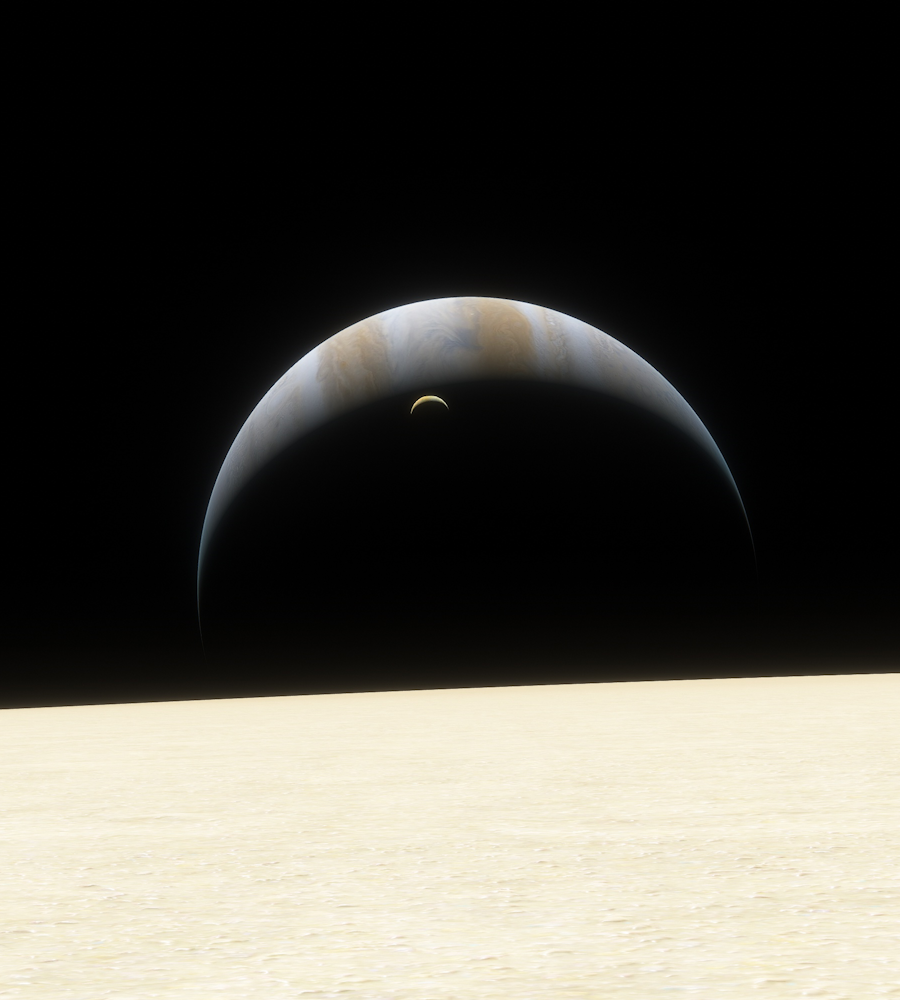
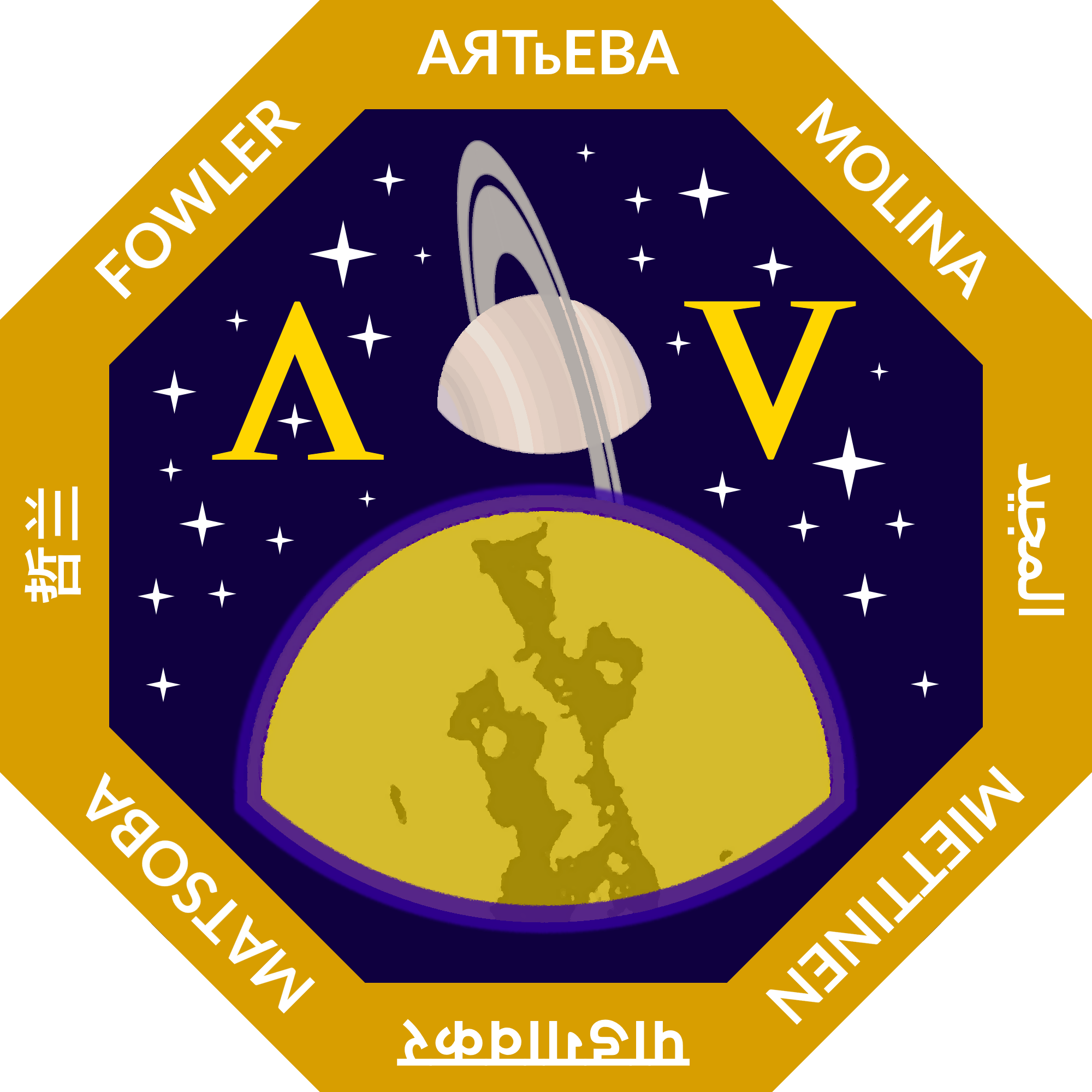
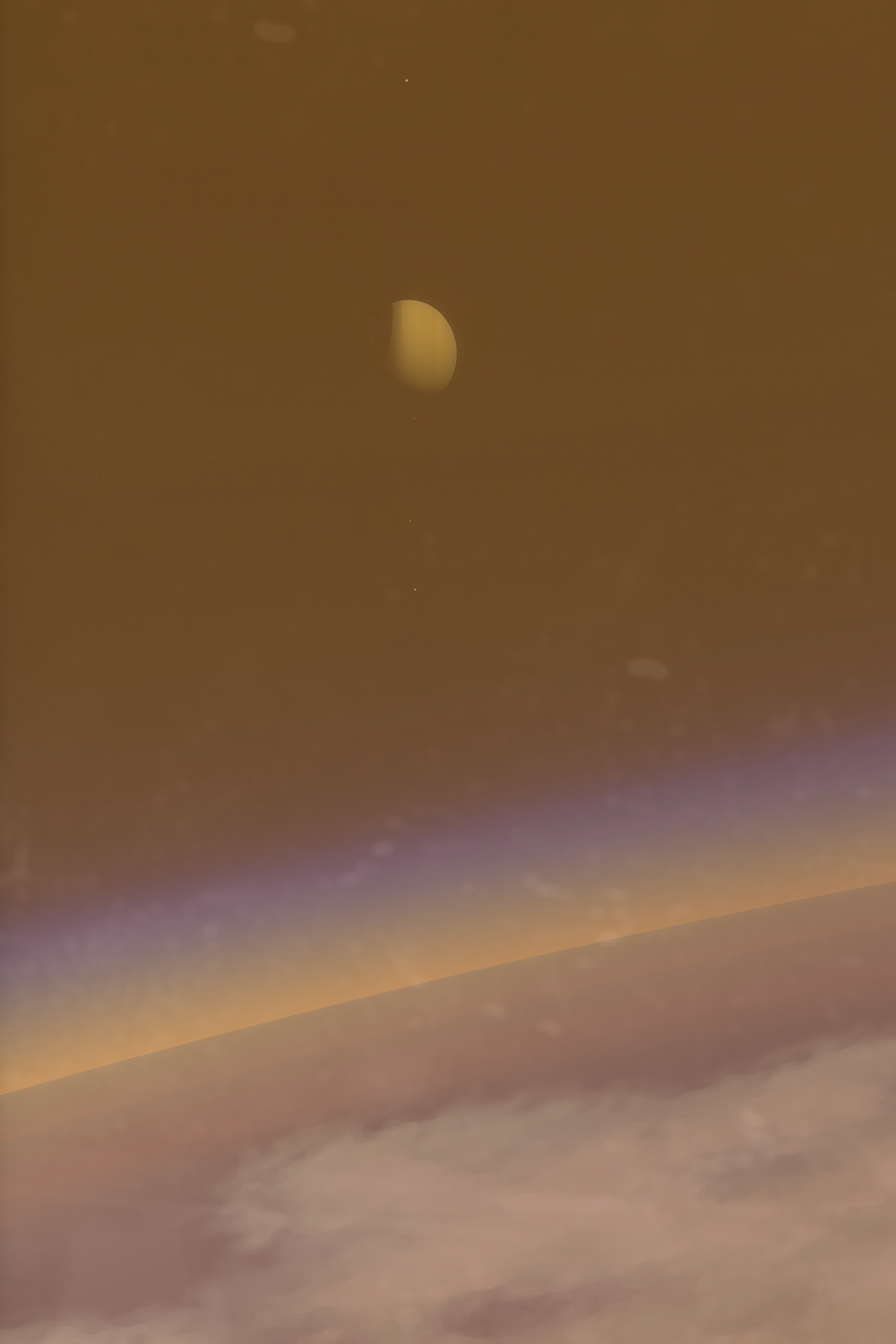
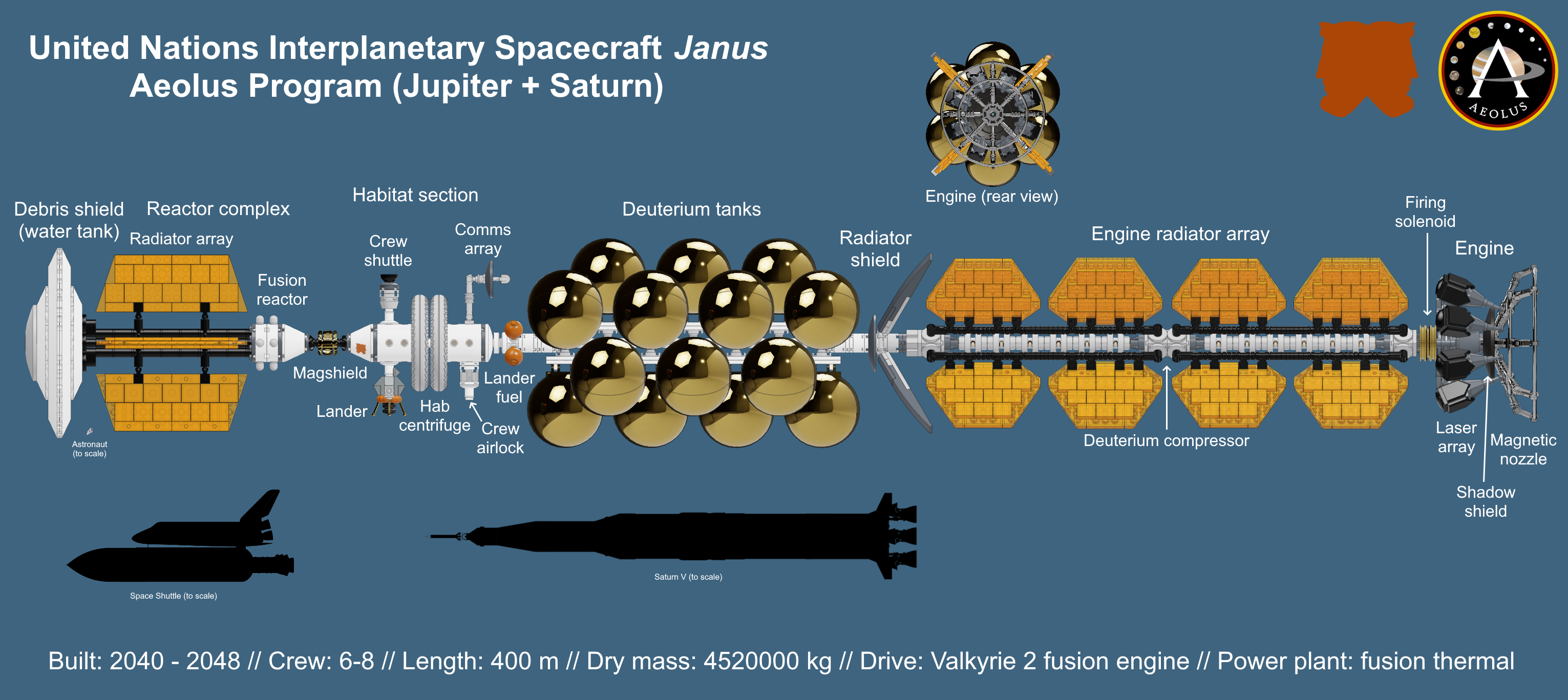


Comments
Author's Notes
Pay no mind to the add names later sections. It's almost the end of WorldEmber and I want to get this article published because it's over half my word count!